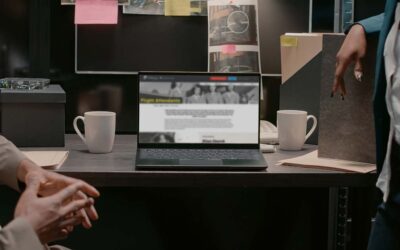Myth #3: It’s too Hard to Digitize Museum Collections

Rachael Cristine Woody
Last week we reviewed Myth #2 of the museum myth series: It’s Easy to Digitize Museum Collections. This week we continue with exploring the opposite myth, that it’s too hard to digitize museum collections.
Hard in this context can mean that it’s too expensive, slow, or hard from a technical perspective to digitize museum items. As we learned last week, these descriptors for digitization aren’t 100% accurate and their definitions are subjective. This post will focus on each part of the “too hard” element and provide context (and ideas!) for each.
Myth #3: It’s too hard to digitize museum collections.
Digitization is Expensive
Yes. There are costs to consider when it comes to digitization of the museum collection. If there isn’t already digitization equipment, a Collections Management System (CMS), and staff in place; there’s will be a significant amount of investment required to even be “digitization ready”. But, the “too expensive” belief isn’t enough to halt all possibility of digitization. There are very affordable options for the main types of digitization equipment we use. You can get pretty far with your smartphone, a USB-powered scanner, and an overhead scanner (think CZUR or Fujitsu ScanSnap). We don’t need to approach this as an “all or nothing” endeavor. Instead, I recommend a “sustainable growth” approach.
Tip: Your smartphone is capable of taking images that meet and exceed current resolution (image quality) standards. The trick is to become familiar and practiced with the tools that come with it. For example, many smartphones now come with a “scan mode”. Scan mode helps the camera apply a flattening and angle correction layer to the image you take—immediately correcting any operator-error. You can also apply similar edit tricks after you’ve taken an image but need to correct it. The smartphone is an adaptable fill-in for ad-hoc imaging and small amounts of digitization work.
CMS and Storage, Too: There are some budget-friendly options out there for CMS and digital file storage services. Some vendors offer free accounts under a “freemium” model, and even larger vendors are beginning to offer “essential” options to help support museums of all sizes. While you can certainly get started with these options, it is important for you and the museum management to keep in mind that as your digitization work grows, so will your need for a robust CMS and digital storage.
Digitization is Slow
Digitization takes time, and depending on your frame of reference, it can be slow. The cheaper or older the equipment, the slower the computer, or the quality level of imaging you’re aiming for—each of these factors will increase the time it takes per image taken.
Tip: Assuming you’re working with the best equipment available to you, the next trick is to automate what you can and make the most efficient use of your time. For example, while you wait for the scanner to complete its scan or the camera to transfer its images over; you can begin some basic data creation.
Digitization is Technically Hard
If you’re newer to digitization this is a true statement. But there are so many free and readily available resources you can access to help you along the way. Each piece of equipment and software comes with instructions and even instruction videos. You also have access to consumer-made videos and how-tos on YouTube. For digitization processes and best practices there are resources available within the industry. A great place to start is with your local professional organization, and right here at Lucidea via past blog posts and the webinar suite.
Conclusion
Both myths—it’s easy or it’s hard to digitize museum collections—have their dangers. If you go into launching a digitization program with no plans for how to address these known challenges, it’s going to be very difficult. On the other hand, many people can be frozen into inaction because starting a digitization project can appear too hard. The best approach is one where you learn and identify what tools you need, you research the costs involved, and you make intentional decisions that sustainably grow your digitization effort.
Additional Reading
Considering Museum Digitization Tools by Item Type
How to Choose the Right Tools for Museum Digital Projects
How to Construct a Museum Digitization Equation
Include these Museum Digitization Standards in Your Next Project

Rachael Cristine Woody
If you’d like to learn more about this topic, register here for Rachael’s upcoming webinar, “5 Museum Digitization Myths to Delete Forever” on May 25, 2022. Rachael Cristine Woody advises on museum strategies, digital museums, collections management, and grant writing for a wide variety of clients. In addition to several titles published by Lucidea Press, she is a regular contributor to the Think Clearly blog and an always popular presenter. And remember to check out Lucidea’s Argus solution for powerful and innovative museum collections management.
Never miss another post. Subscribe today!
Similar Posts
An Introduction to Scrollytelling for Museums
Discover how museums use scrollytelling and digital storytelling platforms to create immersive narratives. This introduction explores key concepts and approaches to interactive storytelling.
Exploring Self-Determinate Multiple Pathways: An Example of Digital Storytelling
Discover how self-determinate multiple pathways offer flexible interactive storytelling in museum exhibits. Learn from the Tenement Museum’s ‘Your Story Our Story.’
Digital Museum Storytelling Example: A Look at Self-Determinate Linear Pathways
Self-determinate characteristics on a linear pathway go beyond brief sidebar topics and instead offer alternative ways to navigate the linear pathway.
Digital Storytelling in Museums: The Prescriptive Linear Pathway in Action
Rachael Woody emphasizes that storytelling is key to engaging audiences with collections. One effective approach? The prescriptive linear pathway—a simple yet powerful method for guiding visitors through digital exhibits.






Leave a Comment
Comments are reviewed and must adhere to our comments policy.
0 Comments